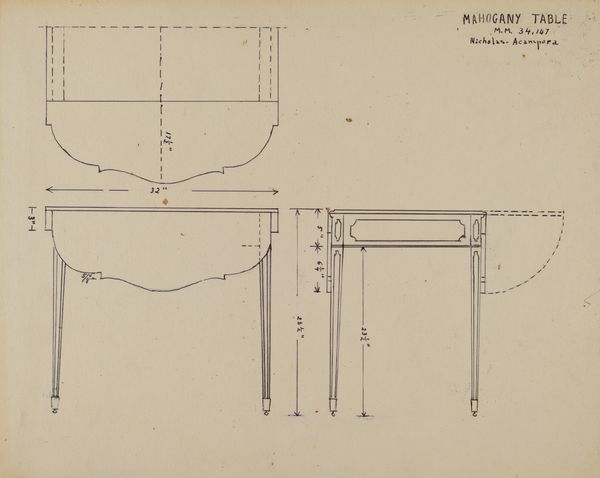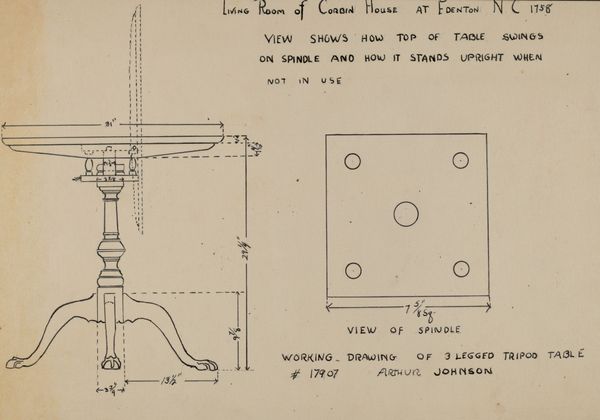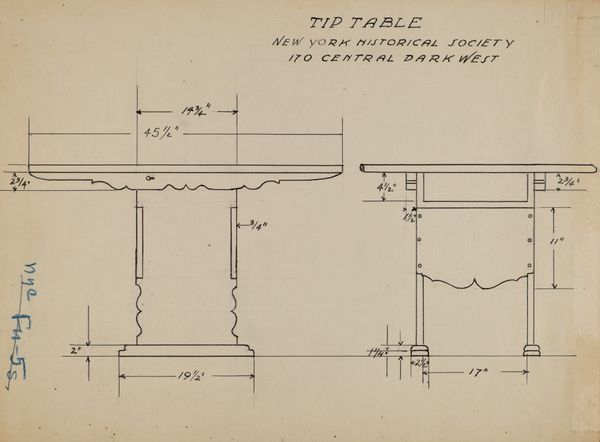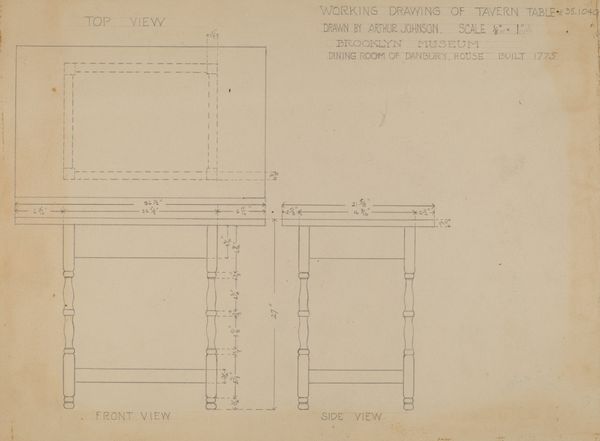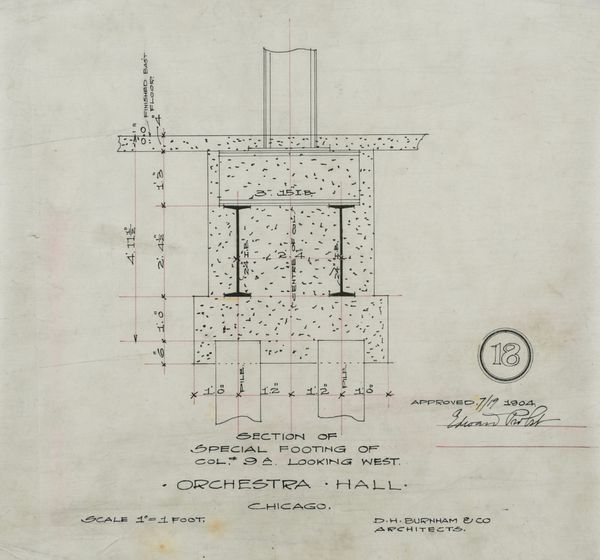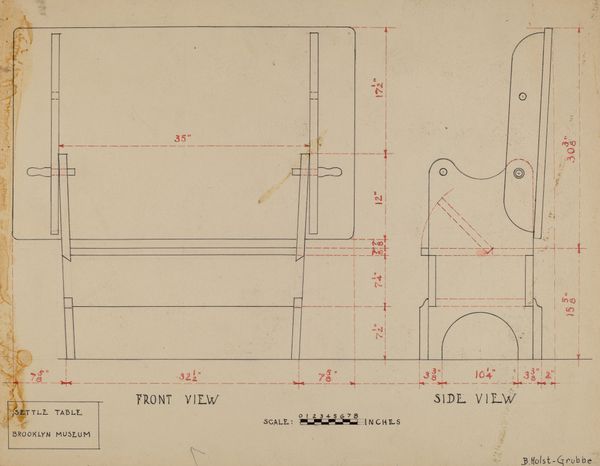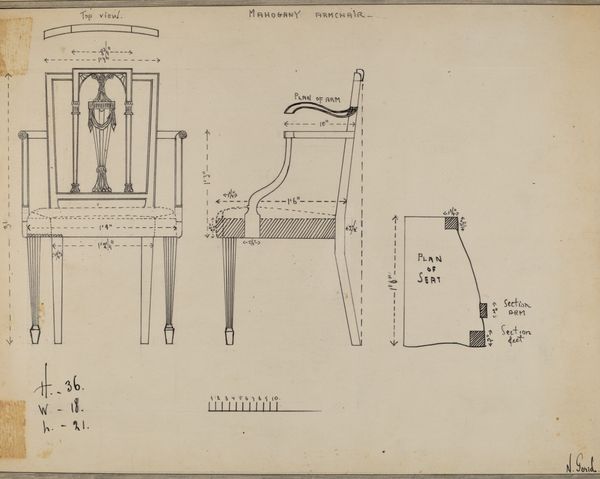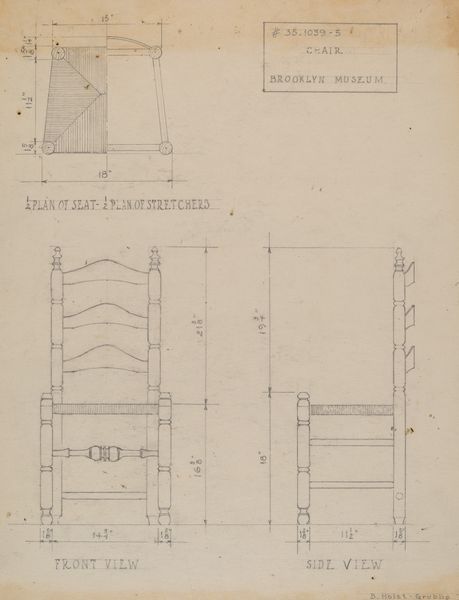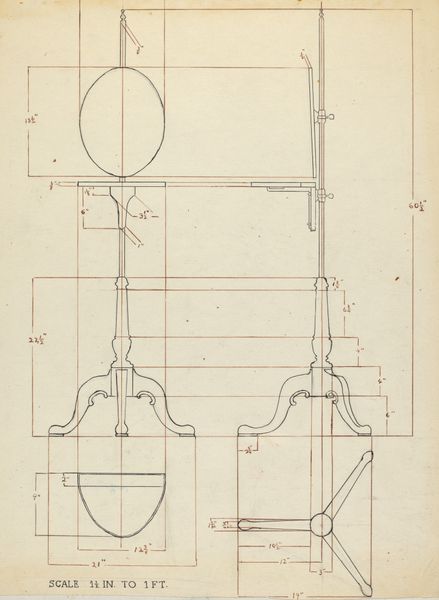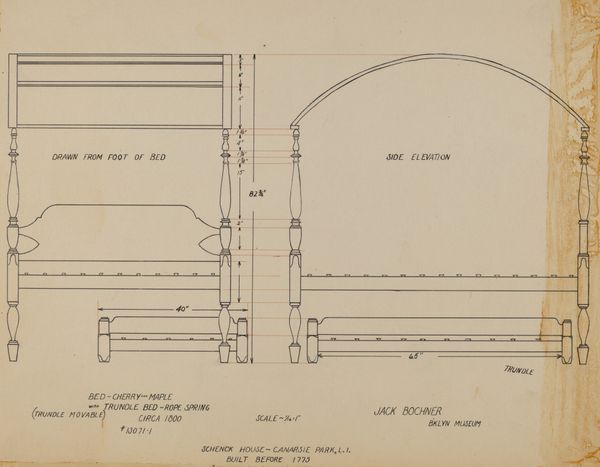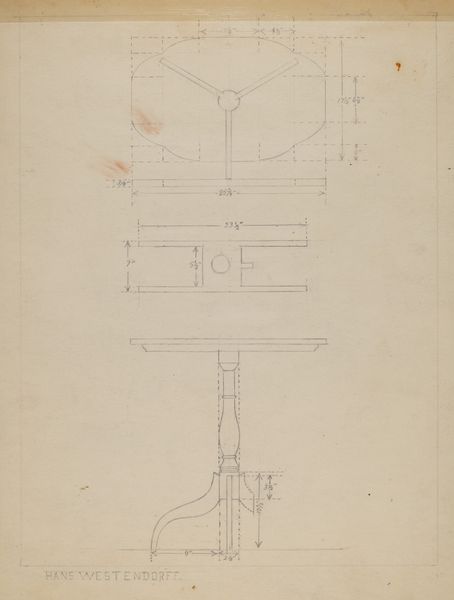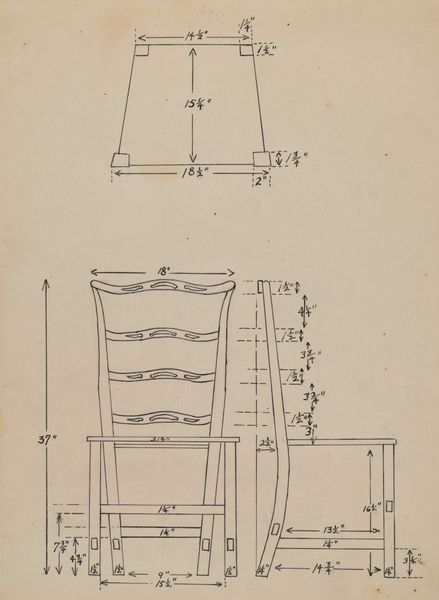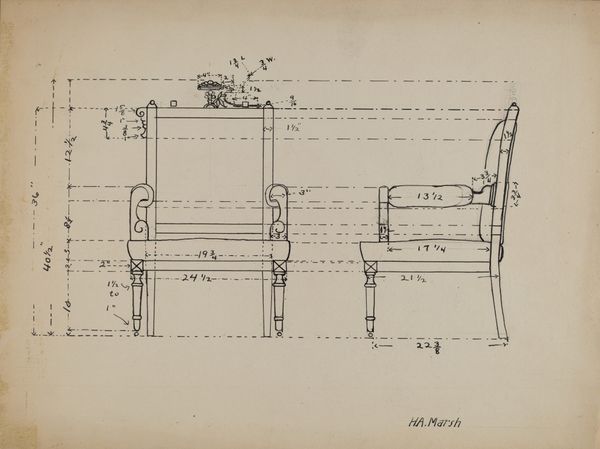
drawing, paper, pencil
#
drawing
#
paper
#
geometric
#
pencil
#
academic-art
Copyright: National Gallery of Art: CC0 1.0
Curator: So, here we have Robert Brigadier's "Candle Stand," a pencil drawing on paper created between 1935 and 1942. Editor: It looks like an architectural plan. All these geometric shapes and precise measurements make it seem more technical than artistic, almost like a blueprint. What do you see in this piece? Curator: Beyond its technical appearance, I see a reflection of its historical context. The Great Depression, right? Consider how design and functionality merged during this period. The drawing itself becomes a statement about utility and resourcefulness. This piece visualizes an object intended to bring light to the home and how light and functionality became essentials during harsh times. Editor: That’s an interesting point. I hadn’t considered the economic climate influencing its aesthetic. Is there anything else that you observe? Curator: Think about the accessibility of candlelight versus other lighting technologies during this period for some social classes, for some locations. To whom would this "Candle Stand" be a luxury? Editor: So the drawing then speaks to different experiences of that era. On the one hand the sleekness speaks to function, perhaps due to economic constraints. But it also reflects an effort to move past sheer survival, through creating beauty and utility, potentially to specific social groups that enjoyed it. I had seen just a drawing. Curator: Precisely. By examining this piece, we aren't only discussing art. We explore design, access, economic stratification and history, engaging in a truly intersectional reading. Editor: Thanks for this expanded view! Curator: Absolutely. Understanding that art does not exist in a vacuum opens exciting new worlds.
Comments
No comments
Be the first to comment and join the conversation on the ultimate creative platform.

